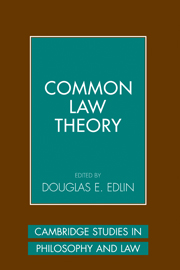4 - A Similibus ad Similia: Analogical Thinking in Law
Published online by Cambridge University Press: 17 September 2009
Summary
Judgment, Precedent, and Example
The Codex officially and resolutely set its face against reasoning by analogy: non exemplis sed legibus iudicandum est, it decreed. Orthodox logicians had deeper reservations. They insisted that exempla illustrant non probant; that is, as Francis Bacon put it, “examples may make things plain that are proved, but prove not themselves.” However, Bacon recognized a more significant role for analogy in reasoning when he added, “yet, when circumstances agree, and proportion is kept, that which is probable in one case is probable in a thousand, and that which is reason once is reason ever.” It was the latter view, and not the skepticism of the Codex or the logicians, that took root deep in common law soil. Bracton, for example, advised, “If new and unusual matters arise which have not before been seen in the realm, if like matters arise let them be decided by like, since the occasion is a good one for proceeding from like to like” (a similibus procedere ad similia). This reasoning, which he called “equity,” “is the bringing together of things, that which desires like right in like cases and puts all things on an equality. And equity is, so to speak, uniformity” (quasi aequalitas). The seventeenth-century common lawyer John Doddridge added, “Equitie therefore in all the use thereof … hath a double Office, Effect, or Function. Sometimes it doth amplifie. Sometimes againe (when reason will) it doth diminish or extenuate.”
- Type
- Chapter
- Information
- Common Law Theory , pp. 102 - 133Publisher: Cambridge University PressPrint publication year: 2007
- 21
- Cited by

